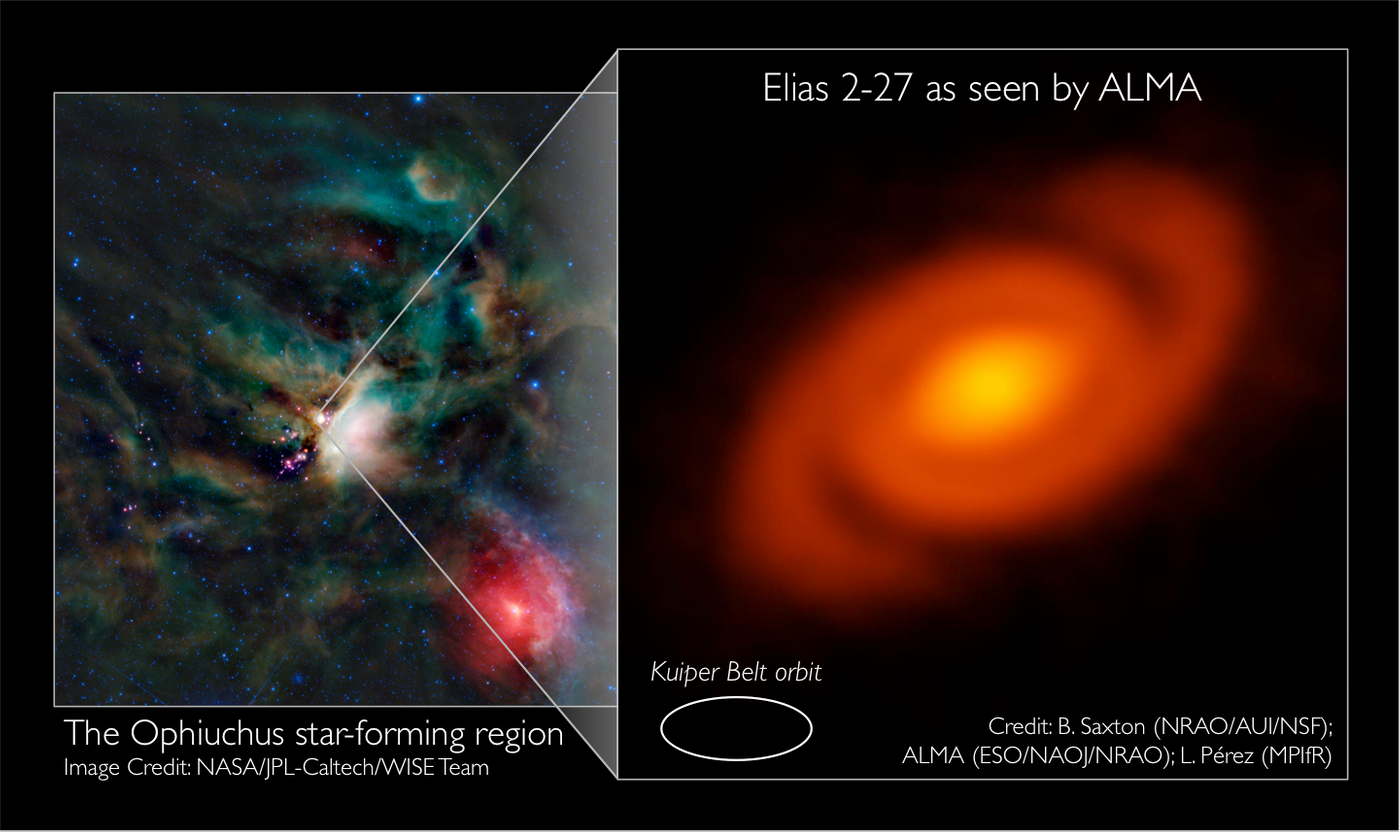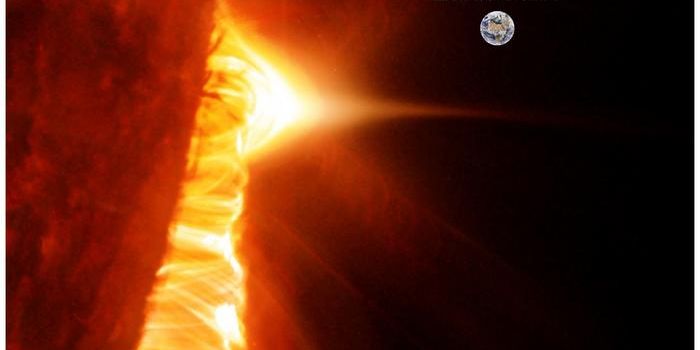Study May Reveal How Planets Form Far Away From Their Host Stars
While we understand that planets can form relatively close to their host stars by way of generating a core first and then accreting more gas and dust material over time (known as core accretion), there is less gravitational force at work further away from the star and fewer dust and gas particles to collect, so planets would need to form in a different way at extreme distances.
A study published in Science, which uses data collected by the Atacama Large Millimeter/submillimeter Array (ALMA) in Chile, reveals more details about how this alternative formation method around a star 450 light years away from Earth called Elias 2-27 might work.

Image Credit: NASA/JPL-Caltech/WISE and B. Saxton (NRAO/AUI/NSF); ALMA (ESO/NAOJ/NRAO); and L. Perez (MPlfR)
“The standard theory of planet formation is called 'core accretion,' where a planet core grows out of smaller particles and planetesimals,” lead author of the study Laura Pérez said. “Once the core is large enough, it quickly accretes gas from the disk and forms a planet with an atmosphere – think of Jupiter, with its massive inner core and then its massive atmosphere.”
“However, this standard picture fails at large distances from the star, Pérez continued. “There are not enough dust particles and gas for core accretion to be proceed.”
The star Elias 2-27 is young at only 1 million years old and has only half of the mass of our own Sun. It’s also surrounded by a cloud of dust and gas that could be the catalyst needed for creating a new planet.
According to the study, there are spiral ‘arms’ in the midst of it all, forming on the edges of what appears to be a flat disk around the accumulating point that isn’t typically seen in this kind of environment. In what’s being called the result of density waves, the spiral arms and disk are believed to be the foundation of planet formation at work in the young system.
Although astronomers have observed spirals like these in star systems before, this is the first time scientists have spotted something like this in a system so young, which is why it’s raising eyebrows.
“Our detection of spiral density waves in Elias 2-27 is the first time we have any evidence of a different process than core accretion,” Pérez said “and these data may help explain the puzzling observations of extrasolar planets at similar faraway locations.”
Astronomers will continue to study the region in the constellation Ophiuchus to learn more about what might be going on in the mysterious clouds surrounding Elias 2-27. Using ALMA, they will have a front-row seat.
Source: Space.com








